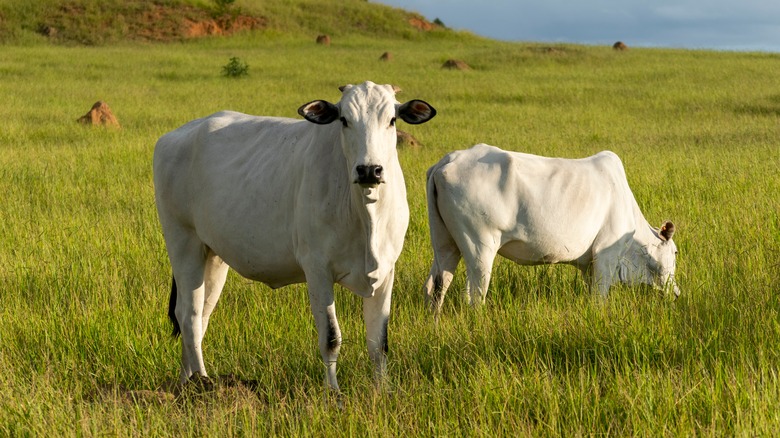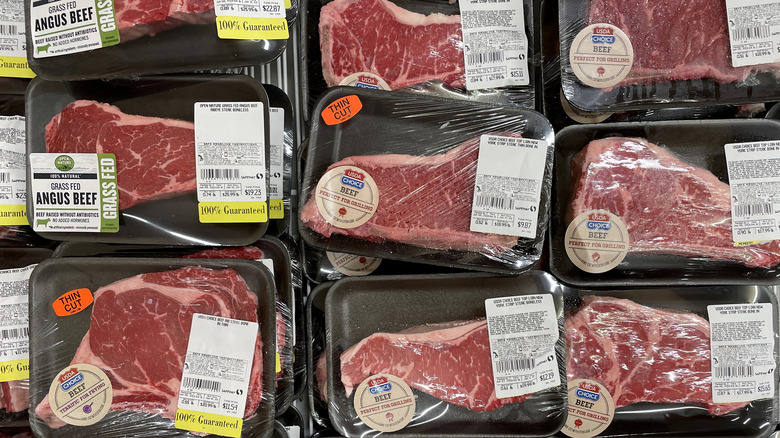Is Grass-Fed Beef Really Better Than Regular Beef?
Cattle grazing in rolling fields of green grass under blue skies with white puffy clouds. It's an idyllic image associated with grass-fed beef. In recent years, more companies have touted that their animals live happy lives, implying that their meat, eggs, milk, etc. taste better. (Think of the slogan: Happy cows come from California.) But, does that mean then that grass-fed beef is really better than regular, grain-fed beef?
First off, what is grass-fed beef, exactly? According to the United States Department of Agriculture, grass- or forage-fed meat refers to animals who eat grass and other forage for the entirety of their lives, except for the period before weaning, when they are fed milk. The USDA specifies that the animal's diet should consist only of grasses, forbs (such as legumes), browse, or cereal grain crops in the vegetative (pre-grain) state. These animals also cannot be fed grain or grain byproducts and must always be allowed access to a pasture during the growing season.
The N.C. Cooperative Extension says that most cows start their lives by being born on pasture and staying there until it is time to be weaned from their mothers. As the cattle matures, they are fed a diet of grains, like corn, soybeans, and wheat, in order to add to the amount of calories they are ingesting. Once grass-fed and traditionally raised cattle reach the desired weight (it takes longer for grass-fed cattle), they are sent to slaughter, according to NPR. So, how do these differences impact the quality of said beef?
A meaty dilemma
When selecting meat for a recipe, we often first consider cut, freshness, and price. However, the way the animal was raised is also important for many consumers. Does the additional cost for grass-fed beef mean you are getting better meat than traditionally raised cattle? According to the Mayo Clinic, grass-feed beef could be better for heart health. Grass-fed beef may have lower fat content, more omega-3 and omega-6 fatty acid, and more antioxidant vitamins, such as vitamin E, according to the health center.
When it comes to taste and appearance, N.C. Cooperative Extension reports that the fat marbling found in beef adds flavor and tenderness to the meat. Grain-feed beef, according to the site, generally has fat that is whiter in color and has more marbling, while the fat in grass-fed beef is usually more yellow and leaner, with less marbling. Because of their grain-based diet, traditionally raised cattle are typically given antibiotics to prevent health issues, such as liver abscesses (via NPR).
While there are some differences in taste and nutritional content between grass-fed and grain-fed beef, N.C. Cooperative Extension contends it's really a personal decision as to which one to choose, pointing out that all beef is high in protein, vitamins, and minerals such as iron, zinc, and B12.

